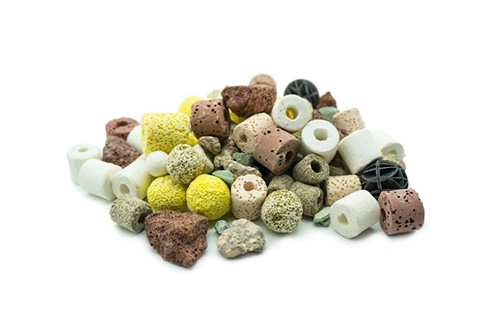
An aquarium is one of the perfect ways to satisfy your inside aqua hobbyist to another level but setting up an aquarium is what needs prior and in-depth information on every aspect. What is more important is managing an aquarium after installation. The critical component of any aquarium, be it saltwater or freshwater is definitely a biological filtration system.
There are a variety of biofilter systems available in the market but before purchasing any of them it is necessary to understand what a biofilter is, how it works, what are its advantages, and how to select the perfect biofilter media for your aquarium. Hence, we have curated this blog to answer all the questions regarding a biofilter aquarium so that you can make the best choice.
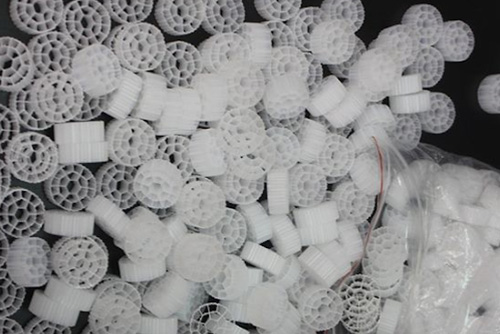
If you are a new aqua hobbyist, a biofilter might sound like an alien term. Well, it won’t be anymore because before jumping to the types of biofilter or its functioning, we will discuss what actually is a biofilter.
A biofilter is a filter media bed that houses a large number of beneficial bacteria that helps in converting the harmful fish waste into useful products that can be reused in the aquarium. A biofilter is a prime location where the biological nitrification process is carried out with the help of nitrifying bacteria. The fish waste consists of ammonia and nitrites which become toxic once they get accumulated in an aquarium. Hence, it needs to be converted into usable forms. This is where the biofiltration process comes in and bio-filter media are what makes this process possible.
The biofilter media needs to be cycled after the installation of an aquarium so that the beneficial bacteria can colonize on the bed of filter media. This process can take around three to four weeks and needs to be monitored. Once the biofilter supports the growth of nitrifying bacteria and is ready to function, then only fishes can be added to the aquarium. This alone explains the importance of a biofilter or the biofiltration process.
As the bacteria colonize the filter media, a biofilm is formed where the beneficial bacteria convert ammonia and nitrites into nitrates and filter it back into the aquarium. Nitrates are relatively less harmful to fish. These nitrates later get removed when there is a water change in the aquarium. This is how the levels of ammonia and nitrites are managed in an aquarium.
But a biofilter is not limited to the aquariums, in fact, is used in every aquaculture filtration system. It is also used in wastewater treatment, aquaponics, and even in the filtration of air for air pollution control. The types of bacteria hence, differ in different kinds of biofilters depending on the place and purpose for which they are used for.
In addition, the biological filtration system is just one mode of filtration used in aquariums but it is the most important too. The other two modes include mechanical and chemical filtration. In mechanical filtration, foam or filter mats are generally used to trap solid particles like uneaten fish food and other debris in the aquarium. It is generally the first stage of filtration in aquaculture filtration.
Talking about the second mode, it is chemical filtration, where substances such as activated carbon are used to filter the dissolved impurities in water. It comes at the second stage of an aquaculture filtration system and is best to filter the chemicals after a chemical treatment.
Third, is the biofiltration system which is crucial and comes at the end. In an aquaculture filtration system, there can be a combination of all these three modes of filtration or at least two, to ensure healthy functioning.
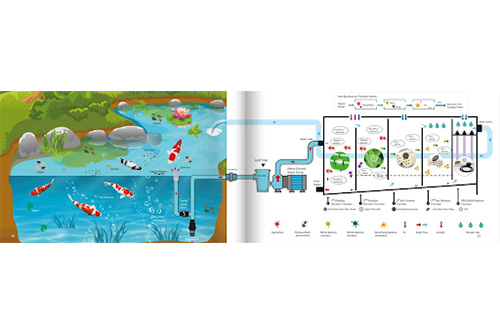
As stated above, a biofilter is a pivotal part of any aquarium. Since the aquarium offers only a limited or restricted space to the fishes, the waste that gets accumulated over time can rise making the water toxic for fishes and even plants. High amounts of ammonia and nitrite in the water can cause organ failure in fish and eventually lead to their death. Hence, the need for a biofilter.
The functioning of a biofiltration system is not very complicated. Once there is a formation of biofilm which is the colonization of beneficial bacteria in the biofilter media and the ammonia and nitrite levels decrease to a significant level, the biofilter becomes mature and fishes can be cultured. After the culturing of fishes, as they excrete in the water, the level of ammonia rises.
The water of the aquarium constantly circulates through the biofilter with the help of a pump. Once the water gets into the biofilter media, the bacteria break down the ammonia into nitrites. Nitrites are less dangerous than ammonia but they still need to be broken down into nitrates with the action of another nitrifying bacteria. Once it gets transformed into nitrates, it returns to the water tank through the pump. This is a continuous cycle.
In order to understand this procedure in a better and more detailed manner, we have a labeled diagram over here explaining the biochemical filtration process in an aquarium.
The First Chamber
At the first stage, there is a chamber for physical as well as biological filtration. Here, the filtration of organic waste like uneaten fish food, decayed plant waste, etc. is done through the medium of mechanical filters. The breakdown of organic waste consumes oxygen. In the diagram, a six-pointed star filter brush is used which helps in increasing the oxygen contacts for the bacteria.
The Second Chamber
This chamber is again for both physical filtration and biofiltration. Here, the beneficial bacteria colonize to form a biofilm and thus, the accumulated ammonia starts to break down into nitrites. Spiral mats are used as a biofilter media which facilitates the colonization of beneficial bacteria by providing oxygen. The photosynthetic bacteria functions with the help of sunlight and air from the surface. This helps them to decompose the toxic substances further.
The Third Chamber
Here, the first biofiltration process is carried out. In the diagram, ceramic biofilter media like Spiral Bacteria House with nitro rings or lotus rings are used which have small holes providing space for the bacteria to stick, grow, and multiply. The ammonia is converted into nitrate with the help of nitrifying bacteria. Inside the biofilter media, anaerobic bacteria take root and do the work.
The Fourth Chamber
At this stage, the process of denitrification takes place. Biofilter media such as the mineral rings and nitro rings helps in the colonization of nitrifying bacteria. As the dissolved oxygen decreases, the bacteria function in the anaerobic environment and break down the toxic substances further. Nitrites are converted into nitrates which completes the entire biofiltration procedure at this stage.
The Fifth Chamber
After the completion of the nitrification procedure, clean water along with non-toxic substances are transferred here. A UVC sterilizer is used to improve the quality of this water by reducing germs and sterilizing it to avoid algae growth inside the aquarium. From here, the filtered water is pumped back for the healthy functioning of the entire aquarium system.
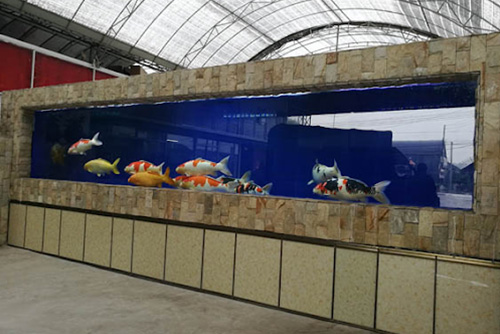
Out of the three filtration systems, physical, chemical, and biological, the last one, i.e. Biological filtration is the most important for an aquarium. The benefits of a biological filtration system are stated below.
The biofilter media such as filter pads, ceramic rings, bio rings, etc. provide a space for the beneficial bacteria to grow, multiply and survive. These beneficial bacteria are needed for carrying out the nitrification system without which an aquarium cannot be established. The process of bacteria growth on a biofilter medium’s surface is very slow but it is essential and needs patience.
Fish waste contains ammonia and since the space is limited inside an aquarium, the ammonia can get collected making the water toxic for fish as well as aquatic plants. Thus, it needs to be removed.
When water with ammonia is passed through a biofilter, the bacteria which colonizes the walls of the biofilter media interact with this ammonia and convert it into nitrates which are less harmful as compared to ammonia. This process is usually aerobic.
Once the ammonia gets converted into nitrites by the nitrifying bacteria, this nitrite needs to be broken down further. This is done with the help of denitrifying bacteria which survive in the biofilter medium. They interact with the nitrite and convert it into nitrates in anaerobic conditions. Nitrates are used by the fishes and aquatic plants and make the water healthy for both.
The manner in which the entire process of biofiltration is carried out ensures diffusion of oxygen in the water through gas spargers which increases the oxygen content of the water thus, making it aerated. Aeration is important in an aquarium as lack of aeration can lead to the death of fish and plants.
Hence, without a biofiltration system, an aquarium can never function. This is true not only for aquarium filtration but for every aquaculture filtration system. Biofilters are pivotal in the Recirculatory Aquaculture System (RAS) as well as aquaponics and other sectors too.
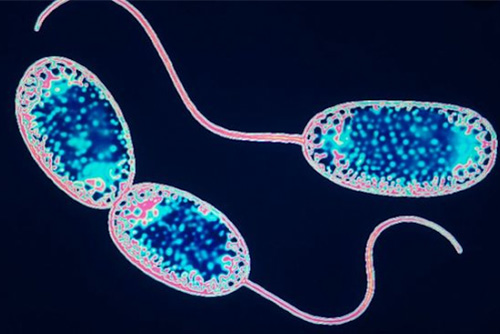
A biological filtration system requires several bacteria at various stages for its functioning. Bacteria is what makes the whole bio filter system active as these are the agents for carrying out the nitrification process on the surface of a biofilter media. A new aquarium does not come with bacteria from the start. These bacteria need to be grown and colonized on the filter media which is done through cycling the tank.
The bacteria in a biofiltration system can be broadly classified into two categories: nitrifying bacteria and denitrifying bacteria. These are discussed below in detail.
Nitrifying bacteria can be defined as the ones which help in the removal of both ammonia and nitrites from the water. This category consists of Nitrosomonas, Nitrospira, and Nitrobacter bacteria. The Nitrosomonas are responsible for the breaking down of ammonia into nitrites. The Nitrospira and Nitrobacter complete the procedure of nitrification by interacting with nitrites and converting them into nitrates.
In this manner, both of these bacteria work together and one provides food for the other. Nitrifying bacteria can function only in the presence of oxygen or aerobic mode. Some of the best filter media to use for the growth of nitrifying bacteria are sponges, bio balls, etc.
In contrast to the nitrifying bacteria, the denitrifying bacteria interact only with the nitrates and convert them into nitrogen gas. This nitrogen gas is then absorbed into the environment through the surface of the water. These bacteria do not need oxygen for their functioning hence, they are found under anaerobic conditions.
Denitrifying bacteria are not very important in freshwater aquariums because the nitrifying bacteria already convert the ammonia and nitrites into nitrates which are less harmful to the fish. Further, the nitrates get removed when a water change is performed in the aquarium and therefore, denitrifying bacteria are not needed much.
But for a marine aquarium, denitrifying bacteria are crucial for the healthy functioning of the organisms. The saltwater species do not have a good nitrate tolerance capacity. Even a small amount of nitrate can be harmful to them. Thus, denitrifying bacteria are needed for the removal of nitrates from the water. These bacteria grow best on ceramic noodles and volcanic rock filter media.
For making the entire process of biofiltration possible, bio filter media are required as they are the home of millions of nitrifying bacteria. It is on the surface of these filter media, that these beneficial bacteria form colonies, survive, and function. Before jumping to the different kinds of biofilter media, the qualities of a good biofilter media should be understood properly.
The qualities of a good biofilter media are explained below:
1. Large Surface Area
The larger the surface area of a biofilter media, the more space it will provide for the growth of bacteria, hence, more effective will be the entire biofiltration process. In addition, a good filter media has several pores on its surface to house more microorganisms. Some good examples include ceramic rings like nitro rings or mini rings.
2. Non-corrodible material
A biofilter media should be made of a material that is non-corrodible, resistant to decay, and impervious to chemicals. Marine-grade construction material needs to be used which ensures a longer working life of the biofilter without the need to change over and again. Some materials have their own advantages over others like a biofilter media made up of calcium carbonate gives the additional benefit of pH control of water.
3. Low maintenance and cost-effective
A biofilter media with self-cleaning properties is preferred. It should also be economical in price with good mechanical strength and perform all the functions ideally.
Once we have figured out the qualities that a good biofilter media should possess, it is time to discuss some of the best and most widely used bio-filter media.

These rings are one of the best for biological filtration. They offer a large surface area for the bacteria to grow and multiply. These rings can house both nitrifying and denitrifying bacteria. The ceramic filter media is also porous in nature which means more space, hence, a larger number of bacteria which increases the overall efficiency of the biofiltration process.
Ceramic rings are also low in maintenance and need to be replaced every six to eight months only. Some of the best ceramic rings are offered by Mountain Tree such as Spiral Bacteria House, Lotus Root Bacteria House, Mini Rings, Nitro Rings, and many more.
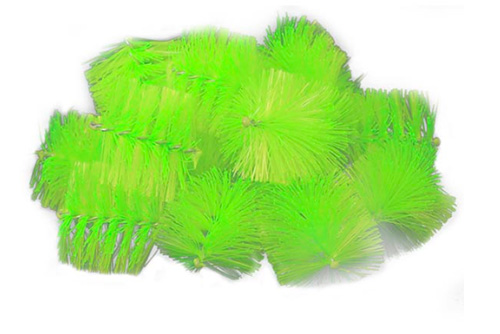
These are used both for the purpose of mechanical filtration as well as biological filtration. The bristles of filter brushes work effectively in trapping the organic waste like coarse dirt particles, uneaten food particles, any decaying plant particle, or other substances at the initial stage itself which further increases the efficiency of a biofiltration process.
The filter brushes also provide the surface for bacteria to stick, grow, multiply and survive so that they can carry the nitrification process. Mountain Tree filter brushes are available in several shapes and types and can be used for more than 5 years which makes them reliable and low-maintenance at the same time.
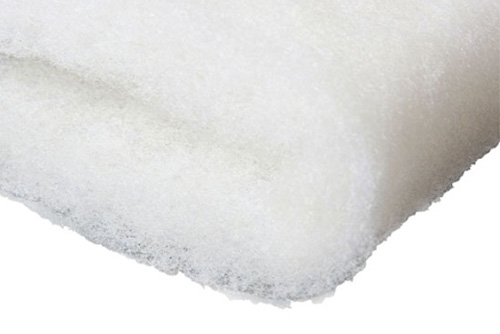
These can also be used both for the purpose of mechanical filtration and biofiltration. Filter pads made up of good quality and washable materials are good as they can be washed and reused, saving money. These are suitable as wet as well dry filters and can be used for both nitrifying and denitrifying bacteria.
Filter pads provide a large surface area for the settling of beneficial bacteria. They can be used with multiple filters like canister filters, etc. Check out some of the best filter pads manufactured by Mountain Tree such as 3D filter pads, carbon wool pads, and even foams for both freshwater and marine water aquariums.
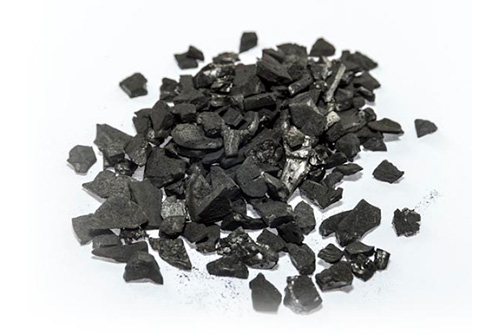
Activated carbon works best for the chemical filtration of water in an aquarium. It quickly absorbs the dissolved impurities from the water which a mechanical filter cannot. Activated carbon is mostly used after chemical treatment of the aquarium water. These do not work as biofilter media or mechanical media.
It is best suited for removing odor, pesticides, chlorine, etc. from the water making it clean and healthy for the fishes and plants. In addition, activated carbons can be used in both freshwater and marine water aquaculture systems.
Mountain Tree provides a developed version of activated carbon with multiple features like coconut carbon which is made of natural raw material, does not increase the phosphate levels in the water, is dustless, and evidently fast working, and lasts for a longer period of time.
There are many other filter media too like bio-balls, moving bed filter media, ceramic balls, etc. All types of bio-filter media require cleaning once in a while. They should be cleaned only with normal water which should be free from chlorine as chlorine can kill the bacteria. Also, no chemicals should be used as this can also kill the beneficial bacteria.

Mountain Tree, located in China, is a leading bio-filter media manufacturer owing experience of more than 12 years in this field. They provide a range of bio-filter media for both freshwater and marine water aquariums.
Starting with ceramic filter media (spiral bacteria house, lotus root bacteria house, nitro ring, lotus root nitro ring, mini-ring, maifan ring, etc.), they also offer filter brushes (cleaning brush, small square brush, quiet brush, brush ball, etc.), filter mats and foams (3D filter pad, carbon wool pad, 3D filter bag for pump, etc.), coconut carbons, UV sterilizer machine (15W UV sterilizer).
In addition, they are also a renowned manufacturer of pond filter media and accessories like star filter brush, spawning brush, spiral filter mat, air diffuser, simmer, and many more. They even offer unparalleled filtration system solutions, freshwater and saltwater aquarium monitoring system solutions, and customized services to their customers.
Certified with several accreditations, they provide on-site technical support, one year warranty, cost-effective high-standard, and reliable products to their clients. They have worked on more than 100 projects which speaks of their superior quality services and customer support.
A biofiltration system is essential for any aquarium because without it the fishes, as well as plants, cannot survive. Hence, it is important to understand the entire functioning and related aspects of it to select the best-suited biofiltration media for any aquarium. We have tried covering every bit of crucial information in this blog on our end.
Since biofilter media is paramount, quality cannot be compromised. Therefore, a reliable manufacturer is a must. Don’t forget to check out Mountain Tree, for its amazing range of bio-filter media trusted by millions of customers worldwide.




Leave a Reply